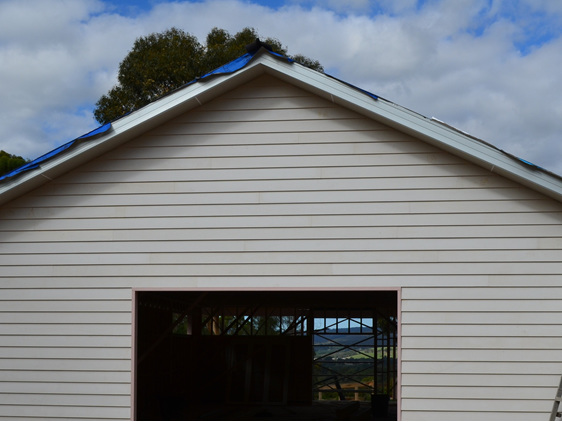Once all of your weatherboards have been installed, it's time to look finishing off the corners nicely. There are a number of ways of doing this, but in our. Contact Hermpac. Technical support technical@hermpac.co.nz Information info@hermpac.co.nz Sales sales@hermpac.co.nz. Auckland 09 421 9840 Wellington 04 586 96 74 Christchurch 03 341 2163. Installation shall be undertaken in accordance with all relevant technical information related to the selected installation method, including information contained within the BRANZ Appraisal No. 663 (2020) Hermpac Bevelback and Rebated Bevelback Weatherboard Cavity System. And the Hermpac Bevelback and Rebated Bevelback Weatherboard Cavity. Garrison Bevelback Weatherboards are made from sustainably grown, finger-jointed pine, which is treated to protect against decay, and comes sealed and pre-painted with two coats of acrylic. Treated with Tru-Core, a diffusion based system which uses waterborne carriers to give 100% penetration of sapwood and heartwood. There are numerous size options available in Accoya, Western Red Cedar and Radiata Pine species. Bevelback weatherboards are laid over a 20mm cavity batten. Follow the link for installation manuals.
Horizontal rusticated weatherboards were a common 1970s cladding, while vertical boards were sometimes used.
On this page:
Though 1970s houses are usually weathertight, there may be a risk of moisture getting in where lapped joints in weatherboard claddings have opened over time. See moisture and weathertightness.
Horizontal weatherboards
Timber
Weatherboards were typically pinus radiata. Finger jointed and/or pre-primed radiata pine weatherboards were available from the early 1970s.
Imported redwood or western red cedar clears, or rimu clears were also used. H1 treated sap rimu was readily available as a weatherboard until the late 1980s.
Profiles
Rusticated weatherboard were the most common, replacing bevel-back weatherboards which were used during the 1950s and 1960s. Bevel-back weatherboards remained in use though, as did skew cut and rebated skew cut weatherboards.

Bevel Back Weatherboard Installation Kit
Dimensions
Standard board size was nominally 200 x 25 mm, but once seasoned and dressed, the typical finished size was 140 x 20 mm. Running joints were scarfed, that is, the boards were cut at 45° along their edges.
Weathergrooves
Weathergrooves were not common in either bevel-back or rusticated weatherboards.
Corners
External corners of weatherboard cladding were either boxed or mitred.
Boxed corners were formed using 100 x 25 mm and 75 x 25 mm timber. They were fixed over the weatherboards at the external corners in both directions. Rusticated boards had rustic plugs fitted to the scallop of the boards (Figure 1) and coverboards to bevelback were finished with scribers.
Bevel Back Weatherboard Installation Nz

Figure 1: Boxed corner with rusticated weathertboards.
Internal corners may have had a flashing inserted behind the weatherboards which were then scribed on one wall and fitted to the boards on the adjacent wall (Figure 2).

Figure 2: Rusticated weatherboards flashed and scribed at internal angle.

Window and door openings
For bevel-back weatherboards, window openings with aluminium joinery were trimmed with scribers. For rusticated boards, the flanges were simply fitted over rustic plugs.
Facing boards of a similar size and finished in the same way as boxed corners were used with timber doors.

Underlay
Wall underlay (breather-type building (Kraft) paper) was not always installed. RJ Willson in his 1970 imperial edition of Timber framed construction does not show building paper in any of the weatherboard details. Synthetic building wraps did not become available until the early 1980s.
Finishing
Weatherboards were commonly protected by priming and painting (often with water-borne paints rather than the oil-borne paints of earlier periods), but cedar and redwood were often stained with a penetrating stain to retain some of the timber character.
Vertical boarding
Vertical boards were available in a range of different profiles, the most common being shiplap (Figure 3) and board and batten (Figure 4). It was common for shiplap to be used as a contrasting cladding is a sheltered location such as a porch or veranda.
Figure 3: Vertical shiplap weatherboards cladding.
The boards were fixed to the horizontal dwangs fitted between the studs. Boards were fixed on one side only to allow the boards to move, and if jointing of board ends was required, a 30° splay-cut joint that sloped down to the exterior face was used. Boards were angle cut along their bottom edge to create a drip edge.
As with weatherboards, wall underlay was not always installed.
Related Links
